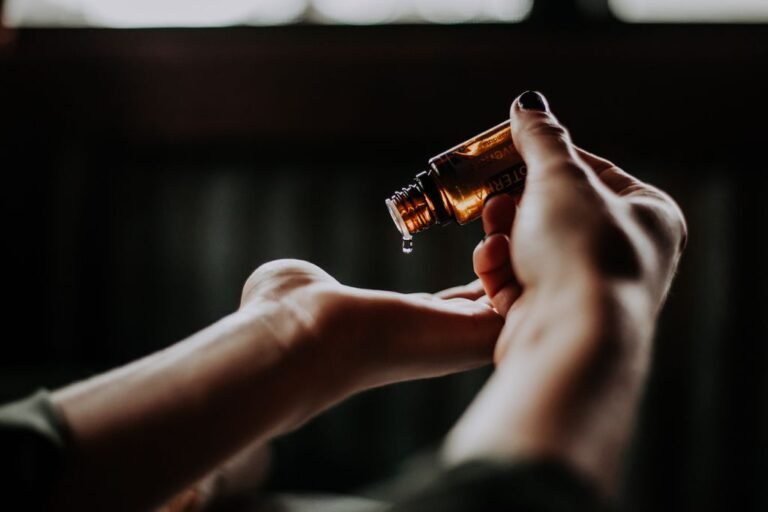Pet First Aid Basics: What Every Owner Needs to Know
Pet First Aid is an essential skill for every pet owner to have. From understanding the risks and signs of emergency to knowing how to handle common pet emergencies, being prepared can make a life-saving difference for your beloved pet. This article will cover the basics of pet first aid, including essential supplies, basic techniques, handling common emergencies, and when to seek veterinary care.
Key Takeaways
- Understanding the importance of pet first aid is crucial for every pet owner.
- Having a well-stocked first aid kit and essential supplies can help you respond effectively to pet emergencies.
- Knowing basic first aid techniques such as CPR, wound treatment, and choking response can save your pet’s life.
- Recognizing common pet emergencies and knowing how to handle them can prevent serious consequences.
- Understanding when to seek veterinary care and how to transport an injured pet safely is vital for your pet’s well-being.
Why Pet First Aid is Important

Understanding the Risks
When it comes to your pet’s health and safety, it’s important to be aware of the potential risks they may face. From everyday hazards to unexpected emergencies, being prepared can make all the difference. Understanding the risks involved can help you take the necessary steps to keep your furry friend safe and healthy.
One common risk for pets is ingesting toxic substances. Many household items, such as cleaning products and certain foods, can be harmful if consumed by your pet. It’s important to keep these items out of reach and to be aware of any potential dangers in your home.
Another risk to be aware of is heatstroke. Pets can easily become overheated, especially during hot summer months. It’s important to provide them with plenty of water and shade, and to avoid leaving them in hot cars or exposed to extreme temperatures.
Additionally, it’s important to be mindful of choking hazards. Small objects, such as toys or household items, can pose a risk if swallowed by your pet. Keep these items out of reach and be aware of any potential hazards in your pet’s environment.
By understanding these risks and taking the necessary precautions, you can help ensure the safety and well-being of your beloved pet.
Knowing the Signs of Emergency
When it comes to your pet’s health, it’s important to be able to recognize the signs of an emergency. Knowing what to look for can help you act quickly and potentially save your pet’s life. Some common signs of an emergency include difficulty breathing, uncontrolled bleeding, seizures, and loss of consciousness. If you notice any of these signs or suspect that your pet is in distress, it’s crucial to seek veterinary care immediately.
In addition to these obvious signs, there are also more subtle indicators that something may be wrong with your pet. Changes in behavior, such as lethargy, loss of appetite, or excessive thirst, can be early warning signs of a potential health issue. It’s important to pay attention to these changes and consult with your veterinarian if you have any concerns.
Remember, you are your pet’s advocate. By being aware of the signs of an emergency and taking prompt action, you can provide the necessary care and support for your furry friend.
Preventing Common Accidents
When it comes to keeping your pet safe, prevention is key. By taking a few simple steps, you can minimize the risk of accidents and ensure the well-being of your furry friend. App-enabled pet safety devices are becoming increasingly popular and can be a valuable tool in preventing common accidents. These devices allow you to monitor your pet’s activity levels, track their location, and even set up virtual boundaries to keep them out of harm’s way. By using an app-enabled pet safety device, you can have peace of mind knowing that you are doing everything you can to prevent accidents and keep your pet safe.
Essential First Aid Supplies for Pets

Creating a First Aid Kit
When creating a first aid kit for your pet, it’s important to include all the necessary supplies to handle common emergencies. Stock up on items such as bandages, gauze pads, adhesive tape, and antiseptic solution. These will come in handy for treating wounds and bleeding. Additionally, include medications that your veterinarian has prescribed for your pet, such as pain relievers or antibiotics. It’s also a good idea to have a list of important contact information, including your veterinarian’s phone number and the number for a 24-hour emergency veterinary clinic. This way, you’ll be prepared for any situation that may arise.
Stocking Up on Medications
When it comes to stocking up on medications for your pet, it’s important to have a plan in place. Feeding schedule is an essential aspect of pet care, and it’s important to ensure that your pet’s medications are administered at the right times. One way to stay organized is to create a medication schedule that aligns with your pet’s feeding schedule. This will help you remember when to give your pet their medications and ensure that they are taken consistently. Additionally, it’s a good idea to keep a record of the medications your pet is taking, including the dosage and any special instructions. This will help you keep track of what medications you have on hand and when they need to be refilled. By staying organized and prepared, you can ensure that your pet receives the necessary medications on time and maintain their health and well-being.
Including Important Contact Information
When it comes to pet first aid, having the right contact information can make all the difference. In case of an emergency, it’s crucial to have the phone number of your veterinarian readily available. Additionally, it’s a good idea to have the number for the nearest emergency veterinary clinic saved in your phone. This way, you can quickly reach out for help when every second counts. Remember, time is of the essence when it comes to providing immediate care for your furry friend.
Basic First Aid Techniques for Pets

CPR for Dogs and Cats
When it comes to performing CPR on your beloved pet, it is important to remember that time is of the essence. Immediate action can make a significant difference in their chances of survival. Here are some key steps to follow:
- Assess the situation: Ensure the area is safe for both you and your pet.
- Check for responsiveness: Gently tap your pet and call their name to see if they respond.
- Open the airway: If your pet is unresponsive, carefully tilt their head back to open the airway.
- Check for breathing: Look, listen, and feel for any signs of breathing.
- Begin chest compressions: Place your hands on your pet’s chest and compress firmly.
- Perform rescue breaths: Close your pet’s mouth and breathe into their nose.
Remember, it is crucial to seek veterinary care immediately after performing CPR. Even if your pet appears to be stable, there may be underlying injuries or complications that require professional attention.
Treating Wounds and Bleeding
When it comes to treating wounds and bleeding in your pet, quick action is crucial. Start by assessing the severity of the injury. If the wound is deep or bleeding heavily, it’s important to seek veterinary care immediately. For minor cuts and scrapes, you can clean the wound with antiseptic solution and apply a pet-safe bandage to protect it from further contamination. Remember to avoid using human medications on your pet’s wounds as they can be harmful. If the bleeding doesn’t stop or the wound becomes infected, contact your veterinarian for further guidance.
Dealing with Choking and Airway Obstruction
When your pet is choking or experiencing an airway obstruction, it can be a frightening and potentially life-threatening situation. Remaining calm is crucial in order to provide the necessary assistance. Here are some steps you can take to help your pet:
- Assess the situation: Determine if your pet is truly choking or if there is another issue causing the airway obstruction.
- Open the mouth: Gently open your pet’s mouth and check for any visible obstructions that can be safely removed.
- Perform the Heimlich maneuver: For larger dogs, stand behind your pet and apply firm upward pressure just below the ribcage. For smaller dogs and cats, you can try a modified Heimlich maneuver by placing your hands on either side of the chest and applying gentle pressure.
Remember, it’s important to stay calm and act quickly when dealing with choking or airway obstruction. If your pet is unable to breathe or the obstruction cannot be removed, seek immediate veterinary care.
Handling Common Pet Emergencies

Heatstroke and Overheating
Heatstroke and overheating can be dangerous for your pet, especially during the hot summer months. It’s important to recognize the signs of heatstroke, which include excessive panting, drooling, rapid breathing, and lethargy. If you suspect your pet is suffering from heatstroke, it’s crucial to act quickly to cool them down. Move your pet to a cool, shaded area and offer them water to drink. You can also wet their fur with cool water or use a fan to help lower their body temperature. Avoid using ice-cold water as it can cause shock. Do not leave your pet in a parked car, as the temperature can rise rapidly and lead to heatstroke. If your pet’s condition does not improve or worsens, seek veterinary care immediately.
Poisoning and Toxic Substances
When it comes to poisoning and toxic substances, it’s important to be aware of the potential dangers that can harm your pet. Many common household items, such as cleaning products, medications, and certain foods, can be toxic to animals. Prevention is key in keeping your pet safe. Make sure to store all hazardous substances out of your pet’s reach and securely seal containers. Additionally, be cautious when using pesticides or fertilizers in your yard, as these can also be harmful if ingested by your pet.
To help you identify potential toxic substances, here are some common examples:
-
Cleaning products: Certain cleaning products, such as bleach, ammonia, and disinfectants, can be toxic to pets if ingested or inhaled. Always keep these products stored in a safe place and use pet-friendly alternatives whenever possible.
-
Medications: Human medications, including over-the-counter drugs and prescription medications, can be extremely dangerous for pets. Keep all medications securely stored and never give your pet any medication without consulting a veterinarian.
-
Certain foods: Some human foods, such as chocolate, grapes, onions, and xylitol (a sweetener commonly found in sugar-free products), can be toxic to pets. Avoid feeding these foods to your pet and be cautious of any potential food hazards in your home.
Remember, if you suspect your pet has ingested a toxic substance, it’s important to act quickly. Contact your veterinarian or a pet poison control hotline immediately for guidance and follow their instructions. Time is of the essence when it comes to treating poisoning and toxic exposures, so don’t hesitate to seek professional help.
Seizures and Convulsions
Seizures and convulsions can be a frightening experience for both you and your pet. Whisker Wellbeing is essential during these episodes, as it helps to ensure your pet’s safety and comfort. Here are some important steps to take if your pet experiences a seizure or convulsion:
- Stay calm and try to keep your pet calm as well. Avoid making sudden movements or loud noises that could agitate them further.
- Clear the area around your pet to prevent any potential injuries. Remove any objects that could be harmful or cause them to bump into things.
- Do not try to restrain your pet during a seizure. It’s important to give them space and avoid getting in their way.
If your pet’s seizure lasts longer than a few minutes or if they have multiple seizures in a short period of time, it’s crucial to seek veterinary care immediately. Seizures can be a sign of a serious underlying medical condition, and a veterinarian will be able to provide the necessary treatment and support.
When to Seek Veterinary Care

Assessing the Severity of an Injury
When assessing the severity of an injury, it is important to carefully observe your pet’s behavior and physical condition. Look for signs of distress such as limping, difficulty breathing, or excessive bleeding. Pay attention to any changes in their behavior, such as aggression or withdrawal. Additionally, check for any visible wounds or abnormalities, such as swelling or bruising. If you notice any of these signs, it is important to seek veterinary care as soon as possible.
To help you assess the severity of an injury, here are some key points to consider:
- Cat Mate C500: This automatic pet feeder allows you to schedule up to 5 meals a day for your cat, ensuring they are fed even when you’re not at home.
Remember, it is always better to err on the side of caution and seek professional help if you are unsure about the severity of your pet’s injury.
Knowing When to Call the Vet
Knowing when to call the vet is crucial in ensuring the health and well-being of your pet. While some situations may require immediate veterinary attention, others may be less urgent. It’s important to assess the severity of the situation and make a judgment call based on the symptoms and circumstances. Broken bones, for example, are a serious injury that should prompt an immediate call to the vet. Other signs that may indicate the need for veterinary care include severe bleeding, difficulty breathing, or unconsciousness. If you’re unsure whether to call the vet, it’s always better to err on the side of caution and seek professional advice.
Transporting an Injured Pet Safely
When transporting an injured pet, it is important to prioritize their safety and well-being. Handling an injured pet requires caution and gentle care to avoid causing further harm. Here are some important tips to ensure the safe transportation of your pet:
- Stabilize any fractures or injuries before moving your pet. This can be done by using a makeshift splint or bandaging the affected area.
- Keep your pet calm and comfortable during transportation. Speak softly and provide reassurance to help reduce stress and anxiety.
- Secure your pet properly in a carrier or a crate to prevent them from moving around and worsening their injuries.
- Avoid sudden movements or jerking the carrier, as this can cause additional pain or discomfort.
Remember, the way you transport your injured pet can greatly impact their recovery. By following these guidelines, you can help ensure their safety and increase the chances of a successful outcome.
When to Seek Veterinary Care
Conclusion
In conclusion, understanding the basics of pet first aid is crucial for every pet owner. By being prepared and knowledgeable, you can provide immediate care to your furry friend in case of an emergency. Remember to stay calm, assess the situation, and take the necessary steps to ensure your pet’s safety and well-being. Whether it’s performing CPR, stopping bleeding, or treating common injuries, knowing how to respond can make all the difference. So, take the time to educate yourself and be ready to be your pet’s first responder. Your pet will thank you for it!
Frequently Asked Questions
What is pet first aid?
Pet first aid refers to the immediate care and treatment given to a pet that has been injured or is experiencing a medical emergency.
Why is pet first aid important?
Pet first aid is important because it can help stabilize a pet’s condition and potentially save their life before they can receive professional veterinary care.
What are some common signs of a pet emergency?
Common signs of a pet emergency include difficulty breathing, excessive bleeding, seizures, loss of consciousness, and severe pain.
How do I perform CPR on a dog or cat?
To perform CPR on a dog or cat, lay the animal on their side, place your hands on their chest, and perform chest compressions while also giving rescue breaths.
What should I do if my pet is choking?
If your pet is choking, you can try to remove the obstruction by performing the Heimlich maneuver or by reaching into their mouth to remove the object if it is visible and safe to do so.
When should I seek veterinary care for my pet?
You should seek veterinary care for your pet if they are experiencing any severe symptoms, such as difficulty breathing, severe bleeding, or loss of consciousness. It is always better to err on the side of caution and consult with a veterinarian.







